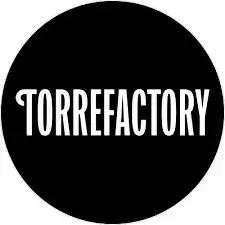In a landscape where every margin point matters and decisions must be made swiftly, managing operations without real-time visibility is like navigating blind. The lack of clear and reliable indicators can be costly. It can result in stockouts, overstaffing, unprofitable promotions or missed opportunities.
Having the right retail performance indicators is no longer optional. It is the essential prerequisite for managing stores efficiently and profitably. The days of time-consuming Excel exports and makeshift dashboards that fail to reflect what is really happening on the ground are over.
In this article, discover the 5 essential KPIs to manage your retail network with precision, increase your profitability, and unlock the full potential of your data with Smart Analytics integrated directly into your Odoo.
Here's an interactive example of a dashboard you could use every morning to analyze and compare the performance of your different points of sale. Put yourself in full screen mode and play along.
Our impact in the retail industry
References that make a difference.





The 5 retail KPIs that will make a difference in 2025
KPI #1: Revenue generated, the key indicator of your business health
Revenue remains the fundamental indicator of your commercial activity, as it allows you to quickly identify performance variations between stores, geographic areas, or specific periods.
To optimize it effectively, start by analyzing your sales peaks by hour and day to adjust your schedules. Then segment your results by product category to identify growth drivers, and finally, tailor your merchandising based on performance data.
Calculation formula: Sum of net sales over the given period
KPI #2: Average basket size, the indicator of your commercial strategy
The average basket size reveals the average purchase value per customer and directly reflects the effectiveness of your cross-selling efforts, pricing strategy, and team training.
To improve it effectively, strategically position complementary products, train your sales staff in upselling techniques, and then adjust your assortment based on identified purchase combinations.
Calculation formula: Total revenue ÷ Number of transactions
KPI #3: Units per transaction (UPT), the measure of your offer’s attractiveness
UPT (Units Per Transaction) measures the average number of items per transaction; a good UPT reflects your ability to enrich the customer basket and the attractiveness of your product offering.
To increase it, you can consider working on your merchandising and product highlighting, offering attractive packs and bundled deals, and then strengthening your teams’ sales posture and skills.
Calculation formula: Total units sold ÷ Total number of transactions
KPI #4: Hourly productivity – Optimizing your human resources
Commercial productivity measures the revenue generated per hour worked; this indicator helps you allocate your human resources efficiently and identify the most profitable periods.
To fully leverage it, consider adjusting your opening hours according to activity peaks, optimizing your schedules based on the most productive hours, and then measuring the impact of your training actions on performance.
Calculation formula: Net revenue ÷ Number of hours worked
KPI #5: DOH (Days of Stock) – Mastering your cash flow
Average days of stock (Days on Hand) are essential to maintain the optimal balance between product availability and cash flow, as too much stock ties up your cash while insufficient stock leads to harmful stockouts.
To optimize your DOH, consider setting up automated alerts on critical thresholds, refining your forecasts by taking into account history and seasonality, and then managing carefully between turnover and availability.
Calculation formula: (Average stock × Number of days in the period) ÷ Cost of goods sold
Is your retail solution already using Odoo?
Benefit from a free audit with Idealis Consulting: our experts analyze your current retail performance indicators and provide you with a personalized operational roadmap to maximize your ROI.
The Smart Analytics competitive advantage for retail
Real-time and multi-store visualization
With Smart Analytics natively integrated into Odoo, you view all these KPIs in real time. Our dashboards allow instant multi-store reading and cross-analysis between sales, human resources, and stock.
No more manual exports and data entry errors
The full automation of these indicators saves you time-consuming manual extractions and ensures reliable decision-making. No more Excel files to maintain, no more risks of human error.
Enterprise-grade architecture without performance impact
Thanks to our no-code data warehouse and ETL architecture, your Odoo ERP’s performance is never affected, even with large data volumes.
Field impact: concrete results observed
Our retail clients across various sectors (textile, food, home, sports) now benefit from a clear and unified vision of their performance. Where they previously relied on tedious manual processes, they now have actionable insights in real time.
Sébastien Baulin, CEO of Retailux (5 stores, 1500+ products) testifies: “Smart Analytics is tailor-made for us. It saves a huge amount of time and I have complete visibility on all stores with a single click.”
FAQ – Your questions about retail KPIs
What are the most useful KPIs for a multi-site network?
These 5 fundamental indicators (revenue, average basket, UPT, hourly productivity, and DOH) form the basis of consistent and effective management for all types of retail networks.
Does Odoo natively track these indicators?
Odoo offers basic features, but with Smart Analytics, you get access to advanced, automated, real-time dashboards with no manual extraction.
How to easily implement these KPIs?
By connecting your PoS, HR, stock, and finance data to our Smart Analytics module, configured according to your specific retail needs.
How to monitor these indicators in real time on mobile?
Smart Analytics dashboards are accessible in real time via the Odoo app. You can also receive automated reports by email at your preferred frequency.
What concrete results can be expected?
Gains in operational efficiency, better stock control, increased responsiveness in daily management, and decisions based on reliable data rather than intuition.
Take action now
These 5 indicators are the pillars of modern and efficient retail management. By rigorously monitoring them and automating their analysis with Smart Analytics, you gain responsiveness, profitability, and operational efficiency.
Take 30 minutes with an Idealis data expert: leave with a personalized diagnosis of your current KPIs and concrete recommendations to optimize your performance.
[Schedule your free audit today and identify your hidden profitability levers.]


Drive your retail performance with precision: the complete guide to the 5 essential KPIs to maximize your profitability.